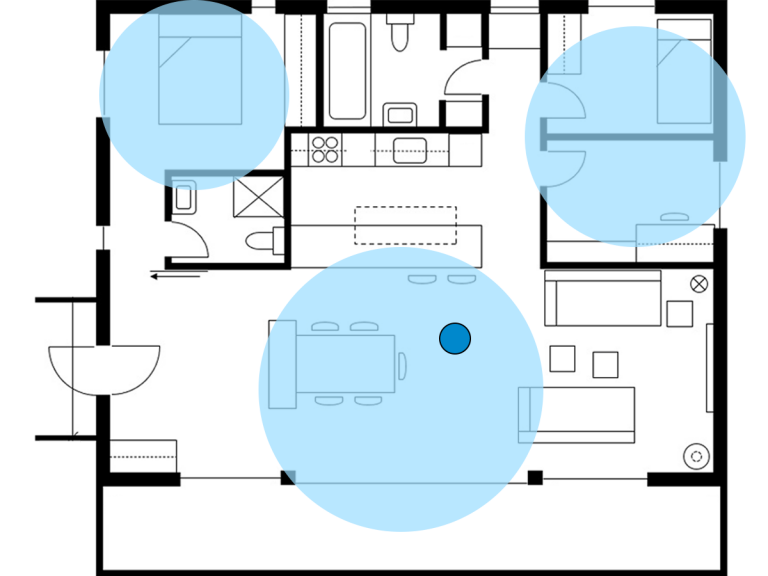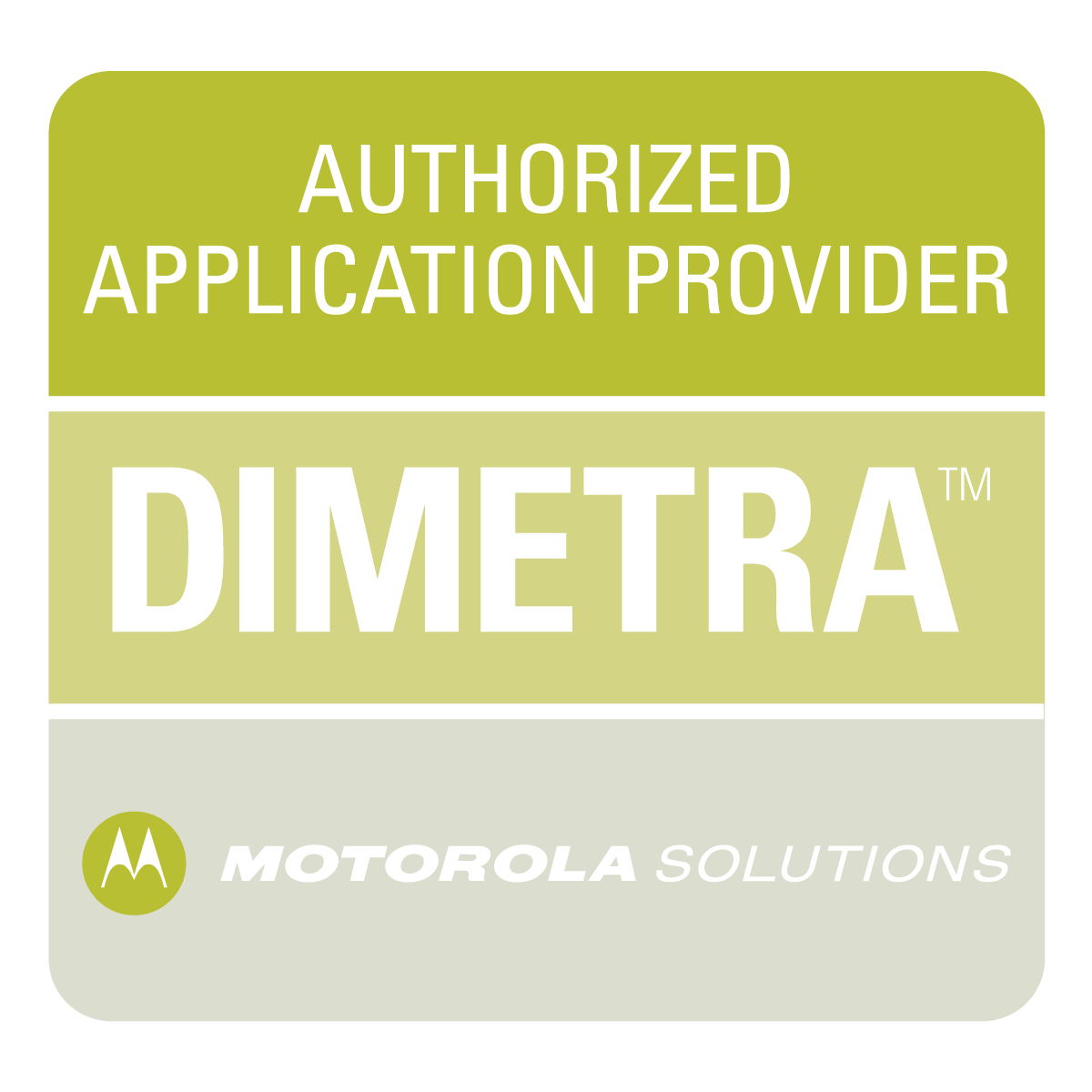Indoor Positioning System (IPS) is used to tracking people and assets under roof and ground where Global Positioning System (GPS) lacks precision or unable to work completely.
Indoor Positioning Systems
Types of Indoor Positioning Systems

Bluetooth Low Energy (BLE) Technology
BLE is, by and large, the most popular technology to be adopted for Indoor Positioning. Also known as proximity-based tracking, BLE utilizes low costing tags and edge devices to create a simple system, enough to locate people or object at a zonal level within a premise. The average accuracy for BLE is around 5 – 10m.
With the introduction of BLE 5.1 Angle of Arrival (AoA), BLE can now offer more than proximity-based tracking. BLE 5.1 AoA solution can achieve real time indoor positioning accuracy down to a sub-meter level.
How will Proximity-based Systems work?
Gateways identifies when a personnel or asset is within its range (the gateway location). That knowledge will then be used, as an example, to locate the personnel or asset within the proximity from the gateway. Simply put, “gateway” used for positioning usually are Bluetooth low-energy (BLE) units acting as receivers that listens to distinguishing data from mobile devices, like smartphones or BLE tags.
How accurate is BLE Devices’ indoor positioning system?
BLE system can provide accuracy tailored for various indoor environments. Generally, an accuracy of 5-10m can be achieved with the standard tags and gateway. While advanced technologies like BLE 5.1 AoA can achieve higher accuracy down to the sub-meter range.
BLE Indoor Tracking Benefits
To save energy and supply higher knowledge transfer speed, the complete Bluetooth BLE communication framework consists of forty frequency channels, separated by 2MHz. three of those channels are the first promotional material channels, whereas the remaining thirty-seven channels are secondary, referred to as knowledge channels. The Bluetooth communication starts with the three primary promotional material channels so offloads to the secondary channels.

WiFi Technology
WiFi positioning utilizes WiFi access points (AP) to locate the person or object. This helps to keep cost low if there are existing WiFi AP at the expense of accuracy. An average WiFi positioning system provide about 20m of accuracy before calibration and fine-tuning.
Time Difference of Arrival (TDOA) measurements can be used to achieve better accuracy down to 10m on average. But this will require at least 3 access points within proximity.
How does WIFI indoor positioning system work?
Wi-Fi indoor positioning solutions use existing Wi-Fi access points or Wi-Fi-enabled sensors, to observe and find sending Wi-Fi devices, like smartphones and positioning tags throughout indoor areas.
How accurate is WIFI positioning?
The accuracy of Wi-Fi for indoor positioning is usually often 5-15 meters as a result of access points usually used whose position has been optimized for digital communication.
The Pros & Cons
Advantages of this technology are that the prevailing infrastructure may be employed in some cases which enabled Wi-Fi is enough once devices are situated, a login isn’t needed. The weaknesses are a lower positioning accuracy compared to Bluetooth Low Energy and therefore the undeniable fact that iOS devices are excluded from client-based positioning. Moreover, Wi-Fi Tags are dearer and less energy-efficient compared to beacons.

Ultra Wide-Band (UWB) Technology
A UWB transmitter works by causation billions of pulses (UWB was antecedently referred to as “pulse radio”) across the wide spectrum frequency; a corresponding receiver then interprets the pulses into knowledge by listening for a well-recognized pulse sequence sent by the transmitter.
Benefits of UWB technology
Indoor positioning in industrial environments usually needs precise localization. For this purpose, we provide solutions supported by the short-range radio technology Ultra-wideband (UWB). It doesn’t work with shopper standards like Wi-Fi and Bluetooth Low Energy, however, offers AN accuracy higher than 30cm.
How accurate is Ultra-Wide-Band (UWB) indoor positioning system?
Indoor positioning with Ultra-wideband has some important advantages: The accuracy is 10-30 cm, which is significantly higher than once operating with beacons (1-3 meters) or Wi-Fi (5-15 meters). Latency time is extremely low (position request up to one hundred times/second)
The Pros & Cons
Ultra-wideband could be a short-range radio technology that might be used for indoor positioning. In distinction to Bluetooth Low Energy and Wi-Fi, positioning is completed with transit time methodology (Time of Flight, ToF) rather than the activity of signal strengths (Receive Signal Strength Indicator, RSSI). This methodology measures the period of sunshine between AN object and several other receivers (anchor Nodes). For the precise localization of AN object, a minimum of three receivers are necessary (trilateration).
Also, there has to be a direct line of sight between receiver and transmitter.
The object to be track (asset) is provided with a tiny low tag (UWB Tag) that runs on battery power or attracts its power via a self-propelled vehicle, for instance. It sends knowledge (ID, ToF, timestamp) to the anchors. The anchors have a set position within the infrastructure and might use the period of sunshine to calculate the space of the plus. Combining the info of three anchor Nodes or a lot of leads to a positioning accuracy of 10-30 cm.

Acoustic Technology
When the sound is higher, the waves are nearer along (higher frequency sound) and once the sound is lower, the waves are farther apart. Longer waves (lower sound) submit to agent materials and curve a lot simply around barriers.
Common use cases for Acoustic System
Acoustic positioning systems will yield AN accuracy of several centimeters to tens of meters and might be used over operative distances from tens of meters to tens of kilometers.
The system is classified into 2 classes (a) systems mistreatment ultrasound and (b) systems mistreatment near-ultrasound. Cricket [9] and active bat [10] are the 2 pioneering solutions of mistreatment ultrasound to localize indoor positions supporting centimeter-level accuracy.
How accurate is the acoustic indoor positioning system?
It utilizes the time distinction of arrival (TDOA) localization approach, which implies the smartphone sends the sound signal, and beacons receive it. in line with our experiment in the room, will offer a sub-meter (90% < 10cm) correct indoor positioning.

Infrared (IR) Technology
Infrared wireless networking uses infrared beams to send knowledge transmissions between devices. Infrared wireless networking offers higher transmission rates, reaching 10Mbps to 16Mbps. infrared emission beams cannot penetrate objects; thus, the signal is noncontinuous once one thing blocks the sunshine
Types of IR system
There are 2 varieties of infrared technology: people who discover actinic radiation and people that send data via actinic radiation (called wireless infrared technology). Infrared technology that detects infrared usually involves sensors that flip detected actinic radiation into usable data. Let’s take one of the foremost common samples of infrared technology: thermal imaging. as a result of infrared is that the radiation given off by heat, detection actinic radiation will offer data concerning completely different heat sources. Thermal imaging cameras use sensors that take data concerning completely different temperatures (e.g., completely different levels of infrared radiation) and switch that data into pictures that the oculus wouldn’t be able to discover.
Thermal imaging cameras have uses that run the gamut of industries and functions, each in military and civilian areas. Astronomers, for instance, have developed tools that discover actinic radiation in the house as a result of infrared will submit to thick areas of dirt and cloud that light cannot, permitting them to be told concerning unseen aspects of the universe.
How is Infrared Technology utilized for indoor positioning?
In IPS, infrared technology is usually accustomed to gauge wherever somebody or one thing is in a very specific space. Sensors to send and receive signals are put in in a very space and might frequently relay positioning data.
While there are some advantages to the mistreatment of infrared, there also are many limitations ultimately creating infrared a less common alternative in IPS.
What are the advantages of Infrared Technology for IPS?
Infrared contains a few advantages that would be thought of once selecting AN IPS system. Here are 3 key advantages of mistreatment infrared to send information:
- Infrared technology has the advantage of longevity—it’s been around for a minute, it’s widely used, and well revered. place in a different way, it’s a well-understood and fairly reliable technology.
- Infrared needs low amounts of energy to power, creating it comparatively cheap (think concerning however your remote solely desires batteries).
- Infrared could be comparatively secure thanks to transmitting data. It’s arduous to “eavesdrop” on data being transmitted via infrared.
Let's Get In Touch!
You may view our products or contact us using the contact form below.
"*" indicates required fields


